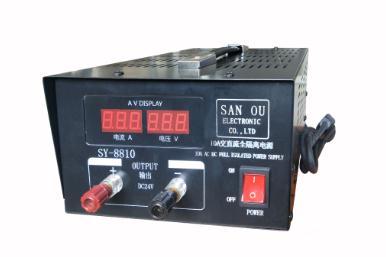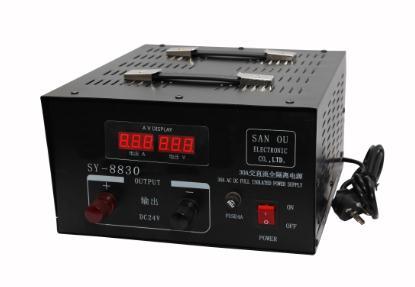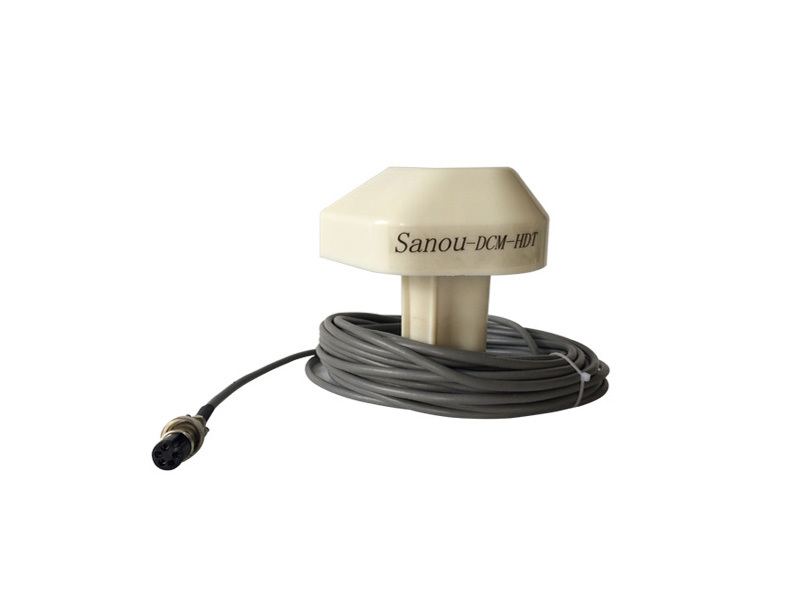News Center
Case Studies: Successful Implementation of 12KVA Frequency Stabilizers in Power Distribution
Case Studies: Successful Implementation of 12KVA Frequency Stabilizers in Power Distribution
Table of Contents
- Introduction to 12KVA Frequency Stabilizers
- The Importance of Frequency Stabilizers in Power Systems
- Case Study 1: Manufacturing Sector
- Case Study 2: Healthcare Facilities
- Case Study 3: Data Centers
- Case Study 4: Telecommunications Industry
- Common Benefits of 12KVA Frequency Stabilizers
- Frequently Asked Questions (FAQs)
- Conclusion
Introduction to 12KVA Frequency Stabilizers
The demand for reliable and high-quality power supply systems has never been more critical in today's industrial landscape. **12KVA frequency stabilizers** play a vital role in maintaining electrical stability, especially in environments susceptible to voltage fluctuations. These devices are designed to regulate voltage and frequency, ensuring that equipment operates within optimal conditions. This article explores various case studies that exemplify the successful implementation of 12KVA frequency stabilizers, showcasing their significant benefits across multiple industries.
The Importance of Frequency Stabilizers in Power Systems
Frequency stabilizers are essential for any operation relying on electrical machinery. When power frequency deviates from its standard levels, it can lead to reduced efficiency, increased wear and tear, and ultimately, equipment failure. Here are some reasons why frequency stabilizers are crucial:
1. Enhancing Power Quality
Power quality affects operational performance. Frequency stabilizers improve power quality by eliminating voltage sags and swells, which can disrupt sensitive equipment.
2. Protecting Equipment Lifespan
Frequent fluctuations can shorten the lifespan of electrical components. By providing a stable frequency, stabilizers help in reducing maintenance costs and prolonging equipment life.
3. Increasing Operational Efficiency
Stable electrical conditions lead to efficient operations. This efficiency translates into lower operational costs and higher productivity.
Case Study 1: Manufacturing Sector
In a medium-sized manufacturing plant, the introduction of a 12KVA frequency stabilizer resulted in significant improvements in machinery performance. Prior to implementation, the facility experienced frequent outages due to voltage fluctuations, leading to production downtime and increased operational costs.
**Implementation Details:**
The stabilizer was integrated into the main distribution panel, ensuring all machines were protected from voltage irregularities. The initial investment in the stabilizer was offset by a reduction in machine downtime by over 40%.
**Outcome:**
Post-implementation data showed improved machinery operation efficiency, reduced energy consumption, and a substantial decrease in maintenance costs. The plant manager reported that the overall productivity increased by 30%, leading to higher profit margins.
Case Study 2: Healthcare Facilities
Healthcare facilities require a continuous and reliable power supply to operate life-saving equipment. A major hospital faced challenges with power stability, risking patient safety and operational efficiency.
**Implementation Details:**
The hospital installed a 12KVA frequency stabilizer to support its critical care units. It provided real-time monitoring and adjustments of the power supply.
**Outcome:**
After the implementation, the hospital noted zero power-related interruptions and improved performance of medical devices. This success not only enhanced patient care but also established a reputation for reliability, attracting more patients.
Case Study 3: Data Centers
Data centers are highly sensitive to power fluctuations. A leading data center was struggling with inconsistent power delivery, affecting server performance and data integrity.
**Implementation Details:**
A 12KVA frequency stabilizer was deployed to ensure consistent power supply to critical servers and backups.
**Outcome:**
The stabilizer's impact was immediate, leading to a 50% reduction in power-related incidents. Furthermore, the data center achieved a 40% increase in energy efficiency, allowing for better performance without increasing operational costs.
Case Study 4: Telecommunications Industry
A telecommunications company faced downtime due to power frequency instability, leading to customer dissatisfaction.
**Implementation Details:**
The company integrated a 12KVA frequency stabilizer into its network operations center, protecting servers and communication equipment.
**Outcome:**
Post-implementation, the company observed enhanced service reliability and a marked increase in customer satisfaction ratings. The stabilizer also contributed to energy savings, which were redirected into expanding network capabilities.
Common Benefits of 12KVA Frequency Stabilizers
The successful case studies illustrate several common benefits of implementing 12KVA frequency stabilizers across various sectors:
1. Improved Energy Efficiency
Stable frequency leads to optimized energy usage, resulting in lower utility bills.
2. Enhanced Reliability
Businesses experience fewer power-related interruptions, ensuring continuous operations.
3. Cost Savings
Reduced equipment maintenance and downtime translate into significant cost savings over time.
4. Environmental Impact
Improved energy efficiency contributes to a reduction in carbon footprints, aligning with corporate sustainability goals.
5. Positive ROI
The initial investment in frequency stabilizers is often paid back within a short period due to the savings in operational costs.
Frequently Asked Questions (FAQs)
1. What is a 12KVA frequency stabilizer?
A 12KVA frequency stabilizer is a device designed to maintain a consistent voltage and frequency in electrical systems, protecting equipment from power fluctuations.
2. How does a frequency stabilizer work?
It works by monitoring the incoming power supply and making real-time adjustments to maintain stable voltage and frequency levels.
3. Where can 12KVA frequency stabilizers be implemented?
They can be implemented in various sectors, including manufacturing, healthcare, data centers, and telecommunications.
4. What benefits do frequency stabilizers provide?
Benefits include enhanced power quality, improved equipment lifespan, increased operational efficiency, and cost savings.
5. How much does a 12KVA frequency stabilizer cost?
Costs vary based on the model and installation requirements, but the investment typically yields significant long-term savings in operational costs.
Conclusion
The case studies presented here clearly demonstrate the transformative impact of 12KVA frequency stabilizers across different industries. From enhancing manufacturing efficiency to ensuring patient safety in healthcare facilities, the benefits are profound and far-reaching. By investing in frequency stabilization technology, organizations can secure a reliable power supply, improve operational efficiency, and ultimately, achieve their business objectives. The future of electrical stability is bright, and those who embrace it will undoubtedly lead the way in their respective fields.
Related News
Understanding the Benefits of a 1 in 4 Out Signal Distributor for Electronic Components
Understanding the Benefits of a 1 in 4 Out Signal Distributor for Electronic Components Table of Contents 1. Introduction to Signal Distribution 2. What is a 1 in 4 Out Signal Distributor? 3. Key Advantages of Using a 1 in 4 Out Signal Distributor 3.1 Enhanced Signal Integrity 3.2 Improved Signal Distribution Efficiency 3.3 Flexibility in System Desi
Understanding the 1 in 10 Out Signal Distributor: A Key Component in Optoelectronic Applications
A 1 in 10 out signal distributor is a specialized electronic device that takes a single input signal and replicates it across multiple output channels—in this case, ten outputs. This function is crucial in various applications, including telecommunications, broadcasting, and data transmission systems. The ability to distribute a single signal to multiple outputs ensures that information can reach
Unlocking the Benefits of the Furuno 1831 Radar with a Quality 24 Pin Square Plug
Unlocking the Benefits of the Furuno 1831 Radar with a Quality 24 Pin Square Plug Table of Contents 1. Introduction to Furuno 1831 Radar 2. Key Features of the Furuno 1831 Radar 3. Advantages of Using a Quality 24 Pin Square Plug 4. Installing the Furuno 1831 Radar with a 24 Pin Square Plug 5. Maintenance Tips for Optimal Performance 6. Troubleshooting Common




